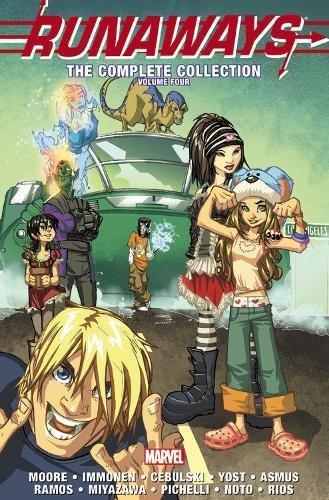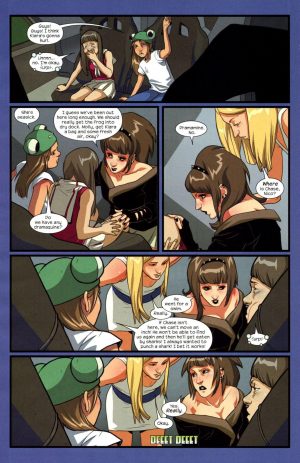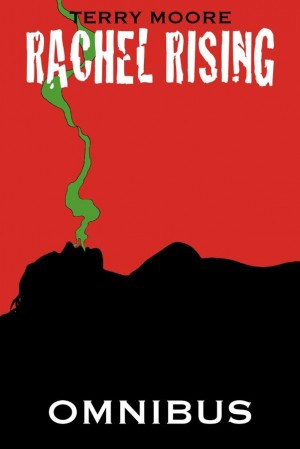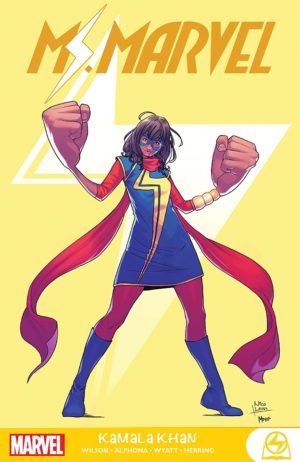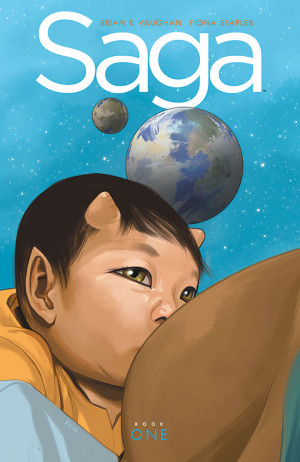Review by Ian Keogh
Of the four Runaways Complete Collection volumes, this is by some distance the poor relation. In fact if you’re a fan of any of the creators involved you may want to consider picking up the paperback collections gathered and that way save money and only endure one sub-par Runaways story. Terry Moore and Humberto Ramos work on Dead Wrong, Moore and Takeshi Miyazawa on Rock Zombies (with supplementary art from Sara Pichelli and Emma Rios), and C.B. Cebulski, Kathryn Immonen, Pichelli and Patrick Spaziante on Homeschooling. More plot specific reviews can be found by following the links.
The one item not included in those collections is a solo story for Nico Minoru as part of a series in which Marvel characters who dabbled in magic were under threat. The key to Nico’s character is her ability to weave magic, but without a full understanding, so what she says when using her staff will occur, but she can’t be sure exactly how. C.B. Cebulski makes good use of this limitation, but in an otherwise slim story in which Nico’s confidence requires boosting. Artist Phil Noto doesn’t stretch himself either, descending into dull layouts after a decorative start.
As for the remainder, there’s a considerable change in the cast bequeathed in Volume Three. Moore followed by Immonen are the primary writers, and each thins the cast, Moore by ignoring some, and ensuring others depart, and Immonen in an unsubtle fashion. Runaways has thrived on change, but this isn’t good. Immonen at least restores Klara to a young girl from 1907, complete with the prevalent attitudes, something Moore almost totally discarded. Moore’s appointment came on the back of well developed character studies on non-superhero titles, but he has great difficulty merging that skill with the needs of a superhero comic, resulting in disappointing stories that are stretched. He provides one really good revelation to end a chapter, then goes nowhere with it. Immonen appears too keen to show off her learning, with the result that her dialogue and narrative captions lack credibility for a teenage cast.
Far better are the short back-ups. There are very funny moments in Chris Yost’s script of Molly trying out for the X-Men, and trying their patience, and James Asmus has a good handle on the cast. The best contribution is that of Cebulski in a story rearranging familiar events as Iron Lad recruits the Runaways to become the Young Avengers. It consistently twists away from expectation, and Patrick Spaziante’s art is very good.
Artistically, there’s a swerve back to cartooning after the more traditional superhero pages in the preceding volume. Sara Pichelli (sample page) is the star turn, having the same facility for visual emotional characterisation as series co-creator Adrian Alphona, and her work is equally ornate and decorative. Humberto Ramos steps far further into exaggeration, and is therefore more of an acquired taste, although his pages are good, with an energy about them. Takeshi Miyazawa skimps on backgrounds (as does Noto) and works in a manga style, the success of which, like Ramos, depends on whether that’s how you’d like to see the cast interpreted.
After so much of the previous volumes was so engaging and successful, this really is down to Earth with an unpleasant bump. As if Chase was piloting the frog.
